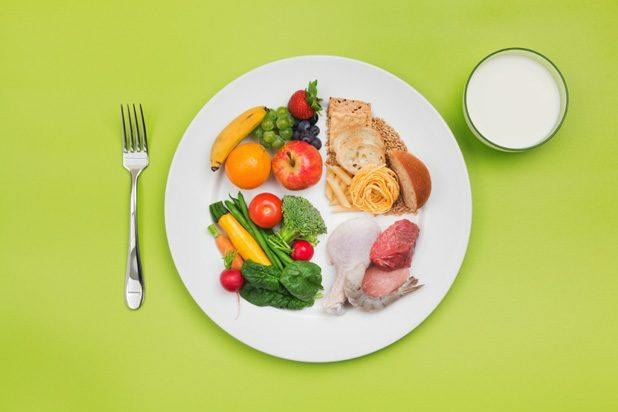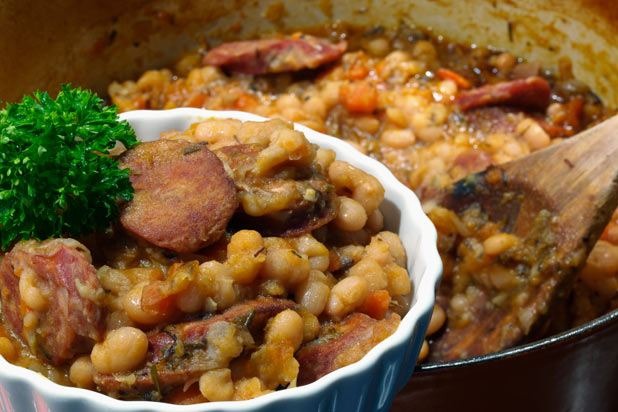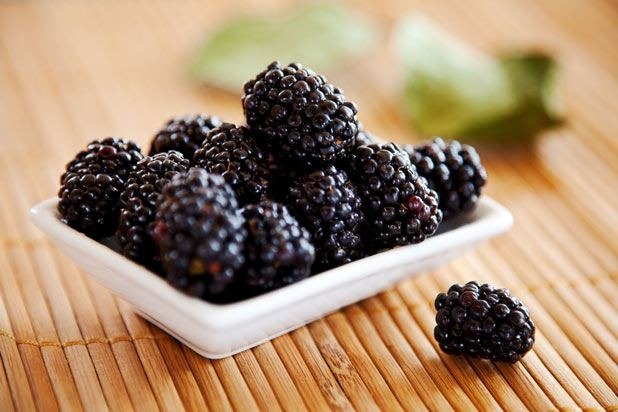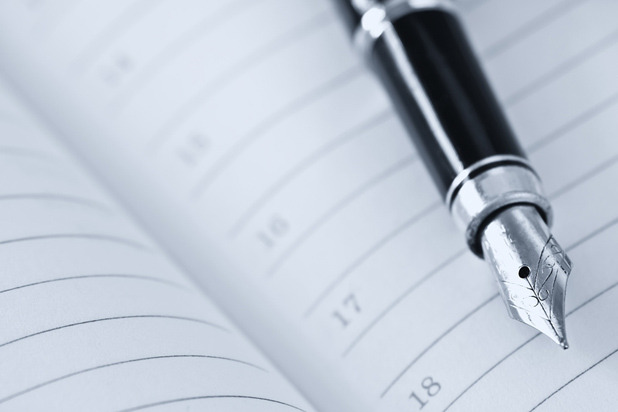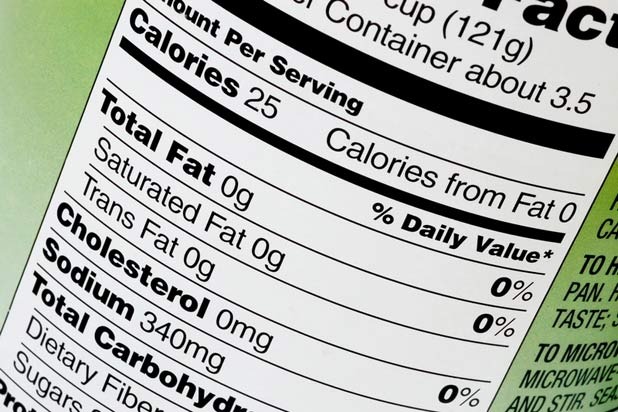10 Healthy Eating Habits To Pick Up Slideshow
Nail biting, popping gum, and cracking knuckles are just a few of the fairly offensive (or just really annoying) common bad habits. Resolving to kick a bad habit isn't as simple as hitting the off switch to change your ways. It takes time, effort, and a solid plan to make a shift in one's habits. The same principles apply to eating habits, and the most offensive "bad" eating habits go much deeper than chewing with your mouth open.
Eat a Balanced Diet
You hear this all of the time: A balanced diet is the key to healthy eating success. But what does that mean to you? Getting the right types and amounts of foods and drinks in your system supplies you with nutrition and energy. This helps maintain body cells, tissues, and organ function in support of normal growth and development. If your body receives too many of certain nutrients or not enough of others, you run the risk of not only developing weight problems but of also throwing off your body's other functions.
Eating the recommended amount of food from the different food groups and catering to your body's personal needs are all a part of maintaining a well-balanced diet. Fewer calories and smarter food choices are generally recommended under the new dietary guidelines from the U.S. Departments of Health and Human Services (HHS) and Agriculture (USDA). Cut back on the fats and enjoy a variety of whole grains, fruits, vegetables, meats, and dairy to keep everything in check.
Drink More Water
Believe it or not, water makes up 60 percent of body weight, and we lose it rapidly during our normal daily functions. Replenishing its supply is necessary for normal body function, but the recommended amount one should drink doesn't adhere to a hard and fast number. Depending on your gender, health, activity levels, and even where you live, your recommended fluid intake varies. The average, healthy living adult's adequate intake of total beverages a day is roughly 3 liters (about 13 cups) for men and 2.2 liters (about 9 cups) for women. Aside from rehydration, drinking more water can prevent overeating, provide energy and healthy skin, and even help with digestion. Substituting other fluids, carrying a bottle on you at all times, and even setting little alarm reminders are great ways to train yourself to drink more water.
Eat Thoroughly
There are many reasons to slow down and savor the foods that you love. Chewing your food thoroughly and taking breaks between bites helps digestion, as well as reduces stress and other unsettling diseases. It also prevents overeating and helps with weight loss. Ways to slow down are simple and easy to do with some practice — try putting your fork down between bites or counting how many times you chew.
Pay Attention to Portion Sizes
Overindulging is one of the many enemies of healthy eating. Research indicates that Americans underestimate their daily caloric intake by 25 percent. The most accurate way to consume the correct amount is to read nutritional labels and diligently measure servings. When a measuring cup isn't available to portion out the recommended serving size, sometimes having a visual understanding of portion sizes can help you eat the correct amount. Vegetable and fruit servings should be about the size of your fist, while meats, poultry, and fish are around the size of your open palm (minus your fingers). Daily pasta servings are about the size of a scoop of ice cream. Some other neat tips recommend that a pancake be no bigger than the size of a CD, and a piece of cheese should be the size of your thumb from its base to the tip. These tips are good in a jam, but measuring your food and memorizing how full your plate generally looks will give an idea of what your portions should always look like.
Eat More Frequently
Eating three square meals a day is a perfectly healthy way to live life. But in truth, resisting snacks in between is sometimes rather hard. Eating more meals sounds like a bad way to shape your eating habits, but doing so with smaller portions is a key way to keep you full and fit. This has been a topic of debate among nutritionists for decades, and while there is no hard and fast evidence that you can change your own metabolic rate, research indicates a correlation between frequent meals — including snacks — and low obesity risk. Eating at regular intervals may help stabilize blood sugar and energy levels, too. The key is to stretch out your recommended daily caloric intake across those six smaller meals and not just snack in between three fully portioned meals. Eating a full breakfast and dinner with sprinklings of snacks throughout the day is just one of the ways you can incorporate this eating style into your daily life.
Focus on Eating
We're all guilty of eating dinner in front of the TV. Eating a portioned meal from a healthy recipe is completely acceptable, but if you mindlessly eat and snack, you could endanger a healthy lifestyle. Research indicates that people who eat in front of the TV, or during other distractions, consume 300 more calories on average. People who focus on the texture, flavor, and appearance of their food were less likely to snack, research suggests. Those who ate distractedly were less likely to formulate food memories and pay attention to signals from the brain that they were full.
Keep a Food Diary
The idea might sound trivial, but it may help those transitioning into making healthy eating habits a part of life. Writing down the food you eat forces you to take an honest look at what you are putting in your body, both in quality and volume. This way, you can review your log and target problem areas. It can help you stay focused on your goals and, if you should choose to see a dietitian, help them identify harmful and helpful habits you have formed. With more and more smartphone owners, keeping a food diary is an easy task with the help of several food diary apps.
Read the Labels
Eating foods without reading the labels is much like driving to an unknown destination without a map. Understanding what is in your food will help you make better decisions for your diet. Aside from recommended serving sizes and calorie count, there are a number of nutritional information factors to consider, especially when accounting for your body's specific needs.
While dining out doesn't always provide easily accessible label information, reading up on dishes before heading out, understanding menu lingo (for example, "creamy" means "fattening"), or asking if you're not sure, is possible. Knowing the breakdown of labels will help you choose foods that are right for you.
Consider Your Body's Needs
There are nearly 7 billion humans on this planet, and each one of them is unique. The same is true for their dietary needs; age, weight, and current health status are all factors that need to constantly be considered. To eat healthy means to eat within the parameters of your health needs. This is a key component of better eating habits, especially if you are considering a diet. If you are unsure of your own dietary restrictions, visit a nutritionist to help keep you on your own track.
Don't Demonize Food
Desserts are not the enemy. They are there, they exist, and sometimes just cannot be ignored. And that's OK! Nutritionists and dietitians suggest that labeling food as good or bad is detrimental to a healthy food consumption mentality. The danger of desserts and junk food is overeating them. Consciously factoring in a scoop of ice cream and portioning out desserts to meet your daily needs is a healthy way to approach your favorite indulgences in your diet.

